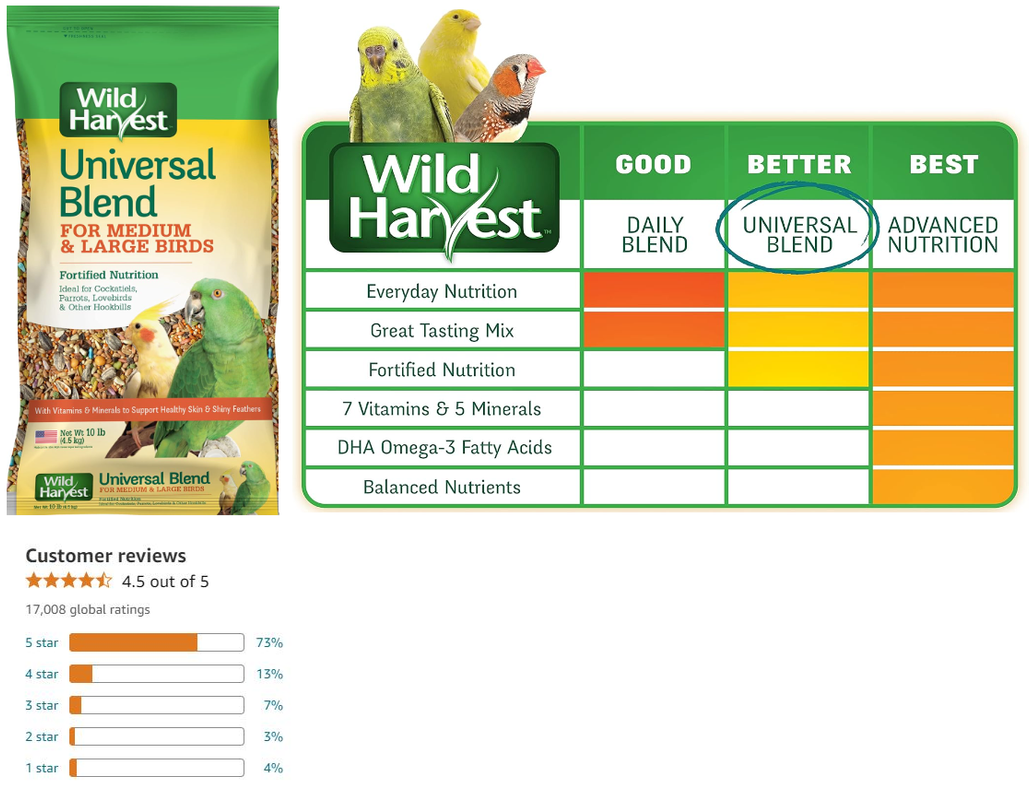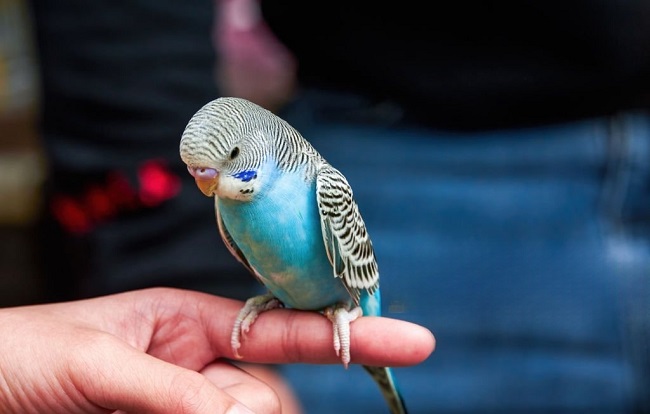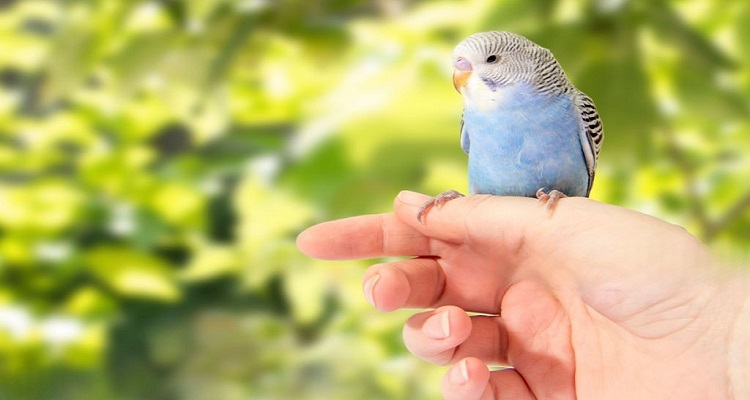Are you wondering about how to tame a parrot? Don’t worry! You have come at right web page. Here, you will get to know all possible things regarding taming your parrot effectively.
When you proceed to tame your parrot, you have to need enough patience, keep understanding, and the right approach. Whether you are new parrot owner or looking to deepen your bond with your feathered friend. Here, you will obtain the effective and compassionate techniques.
If recently you brought a new parrot in your family, then you can be a disappointment to find out it is not good tame. In the world, what are you doing with this fearful and possibly aggressive bird? What will this parrot ever be a confident and maybe even cuddly pet? Now you will ask yourself about how to tame a parrot.
First! Understand Your Parrot Behavior to Tame
You should know about parrot’s behavior, before embarking on the taming process. It is cornerstone of taming and building a lasting bond with your parrots. There are some essential nature and behavior of parrots, include:
Species and Personality: Different species of parrot have unique temperaments. For example, African Greys are highly intelligent and shy, but Cockatiel parrots are more social and affectionate. So, first of all, you have to research your parrot’s species to tailor your approach.
Body Language: Parrots have ability to make communication through their body language. Keep learn to recognize signs of happiness (purring, tail fanning), fear (flapping, screaming), and aggression (biting and lunging). With understanding these signals, you can respond perfectly, fostering trust and security.

Provide Mental Stimulation: Parrots are more intelligent and need mental stimulation. You have to recognize their signs of boredom and distress to keep your parrot happy and healthy.
Patience and Time: Taming a parrot is not an easy task that you learn overnight. You have to needs the enough time, consistency, and a calm environment.
Taming a Parrot: Negative and Positive Reinforcement
When you are going to taming a parrot, keeping know about negative and positive reinforcement. Positive reinforcement can be most effective and humane way for training and taming parrots. Here, you will get to know; why positive reinforcement prefers and how can you implement it effectively.
Also Read: Parrot Sneezing and its Causes, Symptoms, and Treatment
Implementation of Positive Reinforcement
Positive reinforcement enables with rewarding desired behaviors to encourage their repetition. Rewards can be treats, verbal praise, or physical affection.
Identify Rewards: You should find out rewards what motivates your parrot like as their favourite treats, verbal praise, and gentle petting.
Consistency: Be consistent with your rewards. Each time your parrot exhibits the desired behavior, provide a reward immediately to reinforce the connection.
Small Steps: Break down the training process into small, manageable steps. Reward progress along the way to keep your parrot motivated.
Patience: Taming a parrot takes time. So, you have to keep patient and persistent. Make celebration of small victories and gradually building up to more complex behaviors.
Benefits for Positive Reinforcement
Builds Trust: Positive reinforcement helps build a trusting relationship between you and your parrot.
Encourages Desired Behaviors: By rewarding good behavior, you can increase the likelihood that your parrot will repeat those actions.
Reduces Stress: Positive reinforcement creates a calm and encouraging environment, reducing stress and anxiety for your parrot.
Enhances Learning: Parrots learn more effectively through positive reinforcement. So, it taps into their natural behaviors and instincts.
Examples of Positive Reinforcement
Step-Up Training: Encourage your parrot to step onto your hand by offering a treat. Say “step up” and gently lift the bird onto your hand, rewarding it immediately.
Target Training: Use a stick or target and teach your parrot to touch it with its beak. It is rewarded with a treat of each successful touch.
Reducing Screaming: Provide reward your parrot for their quiet behaviors. When the parrot is calm and quiet, provide treats or praise, reinforcing the quiet behavior.
Negative Reinforcement
Negative reinforcement involves removing an unpleasant stimulus when the desired behavior occurs, thus encouraging the behavior to avoid the negative condition.
Drawbacks of Negative Reinforcement
Builds Fear: Negative reinforcement can create fear and anxiety. It can also damage the trust between you and your parrot.
Encourages Aggression: Parrots may become aggressive, they response to fear and stress.
Reduces Bonding: A relationship built on negative reinforcement lacks the positive connection essential for a strong bond.
Preparation before Starting Taming Process
- Research Species: Understand natural behaviors and needs.
- Observe Personality: Learn your parrot’s individual traits.
- Cage Placement: Choose a busy but calm location.
- Cage Setup: Ensure enough space, perches, toys, and hiding spots.
- Consistent Routine: Establish feeding and interaction times.
- Healthy Diet: Provide balanced nutrition with pellets, fruits, and vegetables.
- Stock Treats: Use favorite treats for rewards.
- Understand Body Language: Learn signs of stress, fear, and contentment.
- Create Calm Environment: Minimize stressors, involve family.
- Vet Check-Up: Ensure health and preventative care.
- Prepare Yourself: Be patient, consistent, and positive.
How Do You Tame a Parrot? Essential Steps
Here, we will give you step-by-step guide that helps to tame your parrot effectively:
Also Read: Can Parrots Get Cold? Parrots Safe Temperature
1) Create a Safe and Comfortable Environment
- Cage Placement: Should place the cage in a calm, busy part of your home. Then, parrot can observe daily activities without being overwhelmed.
- Cage Setup: Ensure the cage is spacious with various perches, toys, and hiding spots
2) Build Initial Trust
- Observation: Spend time near the cage, observing your parrot’s behavior and routine. Speak softly to get it used to your presence.
- Consistency: Establish a routine for feeding, cleaning, and interaction. It provides a sense of security.
3) Hand Feeding
- Treats through Bars: Start by offering treats through the cage bars. Popular treats include sunflower seeds, small fruit pieces, or millet sprays.
- Hand Inside Cage: Once comfortable, place your hand with a treat inside the cage. Let the parrot come to you without forcing interaction.
4) Allow Free Movement
- Open Cage Door: When the parrot is comfortable with you nearby, open the cage door and let it explore. Sit close by and speak gently.
- Avoid Forcing: Do not force the parrot to come out or interact.
5) Hand Training
- Step-Up Command: Offer a treat and say “step up” while gently pressing your finger against the parrot’s lower chest. Reward immediately when it steps onto your hand.
- Repeat Consistently: Practice regularly, but keep sessions short to avoid overwhelming the parrot.
6) Positive Reinforcement
- Rewards: Use treats, verbal praise, and gentle petting to reinforce desired behaviors.
- Small Steps: Break down training into small, manageable steps, and rewarding progress. It keeps your parrot motivated.
7) Advanced Training Techniques
- Target Training: Use a stick or target and teach your parrot to touch it with its beak. Reward each successful touch to build more complex behaviors.
- Interactive Play: Engage your parrot with toys and games. Rotate toys regularly to keep it stimulated and interested.
8) Addressing Aggression and Fear
- Identify Triggers: Understand what causes aggressive or fearful behavior. Avoid these triggers during training.
- Calm Environment: Ensure the training environment is calm and free of stressors.
- Redirect Behavior: If the parrot shows aggression, redirect its attention with a favorite toy or treat.
9) Socialization and Bonding
- Daily Interaction: You have to spend quality time with your parrot daily. This includes talking, playing, and simply being in the same room.
- Introduce New Experiences: Gradually expose your parrot to new people, pets, and environments to build confidence and reduce fear.
10) Troubleshooting Common Issues
- Biting: Calmly remove your hand and ignore the behavior without reacting dramatically. Reinforce positive interactions instead.
- Screaming: Ensure your parrot gets enough mental and physical stimulation. Reward quiet behavior and avoid reinforcing screaming by giving attention.
- Fearfulness: Move slowly and speak softly. Gradually expose the parrot to new things while ensuring it feels safe.
FAQs (Frequently Asked Questions)
How Long Does It Take to Tame a Parrot?
The taming process is significantly depended on the parrot’s species, age, and previous experiences. This process can consume a few weeks to several months. Therefore, parrot’s owner should keep patience and consistency.
Can You Tame an Older Parrot?
Of Course! You can also tame of older parrots, but it might consume more time and patience as compared to younger parrots. You keep consistent positive interactions with an older parrot to establish trust.
What Should I Do if My Parrot Bites Me?
Keep stay calm and avoid reacting dramatically, because it can reinforce the behavior. You have to remove hand gently and ignore the biting. You should always focus on reinforcing positive behaviors with treats and praise.
What Treats are Best for Taming a Parrot?
Feed healthy treats your parrots like bits of fruit (apple, grape), nuts, and specially designed parrot treats work well. Recognize what your parrot likes best, then you can these as rewards in training process.
How Much Time Should I Spend Taming My Parrot Each Day?
Spend the minimum 10-15 minutes, several times a day, on taming sessions. Sometime, short sessions can be more effective as compared long, infrequent ones. Always, you give a positive note at the end of taming process that encourages your parrot’s cooperation.
Can Multiple People Help in Taming a Parrot?
Yes! But, it is essential that each one apply the same techniques and commands to avoid confusing the parrot. The consistency of all family members contributes to reinforce training.
How Do I Hand Train My Parrot?
You can start hand training of your parrot with offering treats via the cage bars. Gradually, move your hand closer them. Once comfortable, place your hand inside with treats and let the parrot approach. Apply the calm voice and positive reinforcement.
How Do You Tame an Aggressive Parrot?
When you go to tame an aggressive parrot, should create a calm environment and build-up trust gradually. Always, you apply a positive reinforcement with treats to reward calm behavior. You should avoid direct eye contact and sudden movements. You have to practice many activities. This includes gentle interactions, hand feeding and step-up commands.
Closure
Now, we can hope that you have been fully educated about ‘How to Tame a Parrot’ and their positive and negative reinforcement with ease.
If this article is valuable for you, then please share it along with your friends, family members, pet lovers or relatives over social media platforms like as Facebook, Instagram, Linked In, Twitter, and more.
Also Read: Is Your Parrot Coughing? Causes, Symptoms, and Treatment
Do you have any experience, tips, tricks, or query regarding on this? You can drop a comment!
Happy Learning!!






